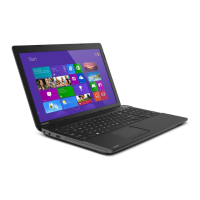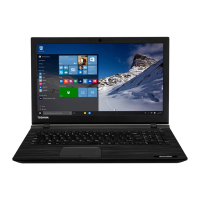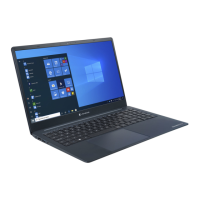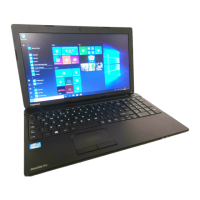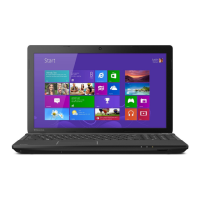
Do you have a question about the Toshiba Satellite C50 and is the answer not in the manual?
| Form factor | Clamshell |
|---|---|
| Product type | Laptop |
| Product color | Black |
| Processor cache | 2 MB |
| Processor cores | 4 |
| Processor model | A6-6310 |
| Processor family | AMD A6 |
| Processor socket | Socket FT3b |
| Processor frequency | 1.8 GHz |
| Processor cache type | L2 |
| Processor manufacturer | AMD |
| Processor boost frequency | 2.4 GHz |
| Motherboard chipset | - |
| Memory slots | 2x SO-DIMM |
| Internal memory | 4 GB |
| Memory form factor | SO-DIMM |
| Internal memory type | DDR3-SDRAM |
| Maximum internal memory | - GB |
| HDD size | 2.5 \ |
| HDD interface | SATA |
| Storage media | HDD |
| Optical drive type | DVD Super Multi |
| Card reader integrated | Yes |
| Total storage capacity | 1000 GB |
| Compatible memory cards | SD |
| Number of HDDs installed | 1 |
| Display diagonal | 15.6 \ |
| Display resolution | 1366 x 768 pixels |
| Native aspect ratio | 16:9 |
| Discrete graphics card model | Not available |
| On-board graphics card model | AMD Radeon R4 |
| Audio system | DTS |
| Number of built-in speakers | 2 |
| Wi-Fi standards | 802.11b, 802.11g, Wi-Fi 4 (802.11n) |
| Ethernet LAN data rates | 10, 100 Mbit/s |
| Charging port type | DC-in jack |
| DisplayPorts quantity | 0 |
| USB 2.0 ports quantity | USB 2.0 ports have a data transmission speed of 480 Mbps, and are backwards compatible with USB 1.1 ports. You can connect all kinds of peripheral devices to them. |
| Pointing device | Touchpad |
| Operating system installed | Windows 8.1 Pro |
| Operating system architecture | 64-bit |
| Battery life (max) | - h |
| Width | - mm |
|---|---|
| Weight | - g |
Details FCC, CE, and other compliance requirements for the device.
Information on energy efficiency and compliance with the ENERGY STAR program.
Covers general safety, handling, disposal, and environmental considerations for the computer.
Guide for first-time computer use, including setup, power, and basic operations.
Instructions on how to properly shut down or restart the computer.
Identifies and describes the external parts of the computer when closed and open.
Explains the function and location of the computer's internal hardware components.
Instructions for using the touchpad and keyboard, including gestures and keys.
Guide on battery types, care, charging, monitoring, and extending battery life.
Details on using LAN, wireless connections, memory cards, and optical drives.
Covers password utilities, system settings, and security features for computer access.
Instructions for system recovery, PC health monitoring, and managing system functions.
Steps for identifying, analyzing, and solving computer problems, including checklists.
Addresses common hardware issues like power, display, drives, and connectivity problems.
Summarizes physical, environmental, and power requirements for the computer.
Details on wireless technology, regulations, safety, and country-specific restrictions.
Explains legal notes for components like CPU, memory, battery, and lists certifications.
